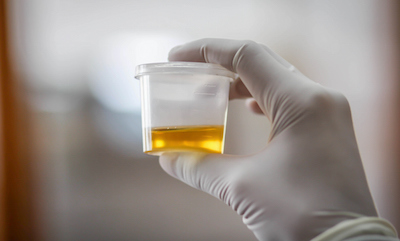Testing People with HIV for Tuberculosis Saves Lives.
 Tuberculosis (TB) is the leading cause of death for people with HIV. In sub-Saharan Africa, TB accounts for 40 percent of deaths among people with HIV, but nearly half of these TB cases go undiagnosed while the person is still alive.
Tuberculosis (TB) is the leading cause of death for people with HIV. In sub-Saharan Africa, TB accounts for 40 percent of deaths among people with HIV, but nearly half of these TB cases go undiagnosed while the person is still alive.
Now, a new study co-authored by a School of Public Health researcher shows that using urine tests for TB to screen all hospitalized patients with HIV would improve life expectancy and be cost-effective in Malawi and South Africa.
The study was published in The Lancet Global Health and could influence international guidelines on TB testing.
“TB is common among HIV-infected people in many parts of the world, and delayed diagnosis can be fatal,” says study co-author Robert Horsburgh, professor of epidemiology and global health. “Diagnosis is difficult because HIV-infected persons with TB often cannot produce sputum, the usual diagnostic specimen. Thus, the availability of a urine-based test for TB that gives rapid results can be life-saving.”
Urine testing using the lipoarabinomannan (LAM) and Xpert tests has been shown to improve TB detection in selected patients with HIV, but before this study it was not clear whether urine testing of all hospitalized patients with HIV would be useful and cost-effective. For that reason, the World Health Organization only recommends these urine tests for patients with less advanced HIV infection, show TB symptoms, or both.
The study was done in conjunction with the STAMP (Rapid Urine-based Screening for Tuberculosis to Reduce AIDS-related Mortality in Hospitalised Patients in Africa) trial, a large clinical trial of urine-based TB screening among hospitalized patients with HIV in Malawi and South Africa. In the current study, the researchers used a computer simulation model of HIV and TB to match short-term clinical outcomes reported by the STAMP trial and project longer-term clinical and economic outcomes.
The researchers found that screening all hospitalized patients with HIV for TB using the urine LAM and Xpert tests would increase life expectancy by 0.5 to 1.2 years, saving around 51,000 years of life in Malawi and around 171,000 years of life in South Africa.
They also found it would be cost-effective compared to sputum testing alone in both countries. As observed in the STAMP trial, urine LAM proved most cost-effective at only $3 per test. The test also takes only about 30 minutes, and can be done at a patient’s bedside.
The researchers also examined the financial implications of urine screening all hospitalized patients with HIV in the two countries. The evaluation included both the costs of urine tests and costs of finding and treating more TB cases. They found that over five years the urine screening strategy would increase health care costs for these patients by a total of $37 million (10.8 percent) in Malawi and $261 million (2.8 percent) in South Africa. The authors wrote that this increased spending would save enough years of life to be cost-effective.
“It’s a wise investment,” says lead study author Krishna Reddy of Massachusetts General Hospital (MGH) and Harvard Medical School. “This has huge implications for increasing the survival of people with HIV in Africa and in other places where TB is common.”
The authors write that the results of the STAMP trial and this cost-effectiveness analysis provide evidence that the WHO should recommend expanding the use of urine LAM to all hospitalized patients with HIV in areas where HIV and TB are common.
The study’s senior author was Rochelle Walensky of MGH. The other co-authors were Sydney Costantini, Amy Zheng, Liyang Yu, and Kenneth Freedberg of MGH; Ankur Gupta-Wright, Katherine Fielding, Elizabeth Corbett, Jurgens Peters, and Stephen Lawn of the London School of Hygiene & Tropical Medicine; Joep van Oosterhout and Melanie Alufandika-Moyo of Dignitas International; Stephen Resch of the Harvard T.H. Chan School of Public Health; Douglas Wilson of the University of KwaZulu-Natal; and Robin Wood of the University of Cape Town.